Blockchain Use Cases and Applications
The advent of the internet radically transformed how people communicated and exchanged value worldwide. The Internet is a global network of interconnected computers. It functions by routing packets of data from one computer to another.
Today, we are globally connected over the internet because our networks and devices follow a common set of protocols and communication standards, allowing data from one device to be accessible and compatible with another regardless of geography or the type of device.
A common standard and global accessibility have enabled the Internet to penetrate almost every part of the economy. We use the internet for entertainment, finance, communication, education, and commerce; the list is endless.
Many consider some aspects of blockchain technology as “Web3,” or the next generation of the internet. This article will explore the use cases of blockchain technology to assess how far the industry has come in adopting the notion of the next generation of the internet.
What is Blockchain Technology?
TCP/IP is the fundamental suite of protocols that enables the Internet to function. It defines how data should be packetized, addressed, transmitted, routed, and received at the destination. IP (Internet Protocol) moves data packets from node to node. IP addresses are like the postal addresses of the internet, ensuring that data sent from one computer reaches the correct destination computer.
HTTP operates at the application layer, a level above TCP/IP. The application layer is responsible for the protocols and methods that enable user applications to connect and communicate over the Internet. While TCP/IP takes care of the logistics of data transport, HTTP focuses on the data's structure.
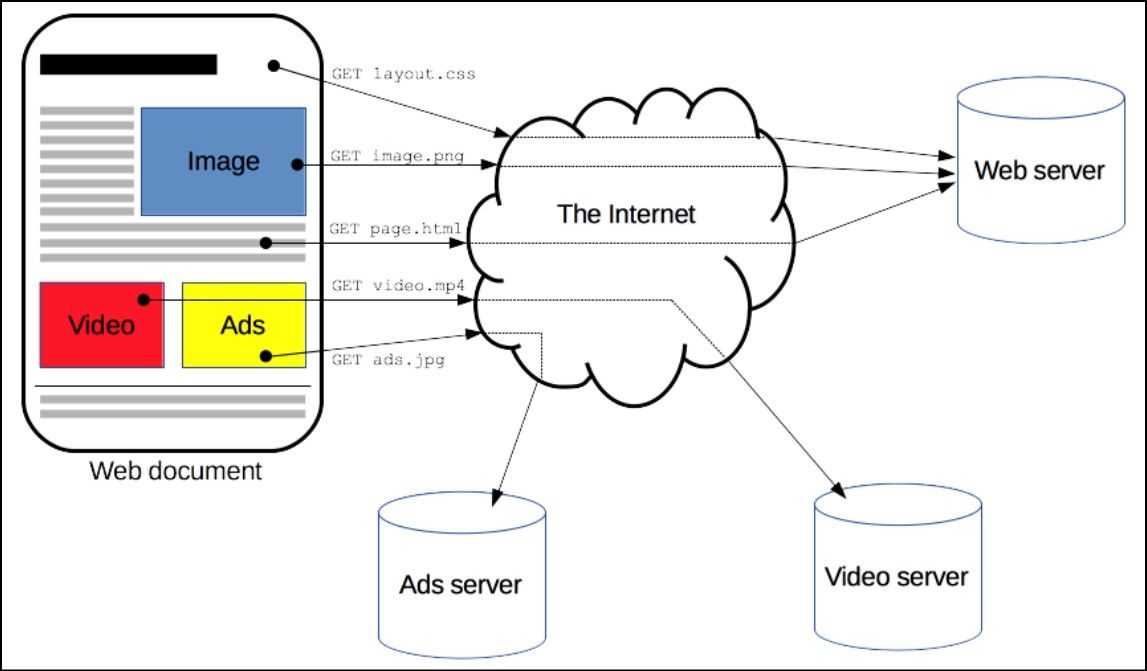
Blockchain is a distributed ledger technology that records interactions between multiple computers. Similar to TCP/IP, blockchain features a network layer responsible for the propagation of information (like transaction data and blocks) across all network nodes to maintain the network's reliability and data integrity.
The EVM (Ethereum Virtual Machine) is a smart contracts-powered blockchain execution environment akin to the HTTP standard of the internet. Both layers represent where the "action" happens: transaction and smart contract execution in blockchains and user-focused activities on the Internet. They are the most visible part of their respective stacks to the end-user.
Internet, But Decentralized
While blockchain technology and the Internet share a layered design, they operate on fundamentally different principles. The Internet, as we know it, functions in a largely centralized and trusted setting. Data is transmitted through established channels, often controlled by centralized entities (like ISPs or big tech companies), and trust is placed in these entities to manage and facilitate communication and data exchange.
On the other hand, blockchain technology is designed to create a decentralized and trustless environment. It removes the need for a central authority, instead relying on a distributed ledger and consensus algorithms (like Proof of Work or Proof of Stake) to validate and record transactions. This decentralization ensures that no single entity controls the entire network, promoting transparency and security.
Despite these differences, both systems are inherently part of the Internet. With the advent of Web3, the next iteration of the web, the applications and services we use today in “Web2” could also operate in this new ecosystem, albeit with some modifications to adhere to blockchain principles. Web3, leveraging blockchain technology, aims to provide a more user-centric internet experience, where users have greater control over their data and online interactions. This narrative shift means that services like social media, online marketplaces, and financial transactions could be conducted on decentralized platforms, offering enhanced privacy, security, and user autonomy compared to their Web2 counterparts.
Is It Safe to Use Blockchain?
The safety of using blockchain technology, much like the Internet, hinges on careful and diligent usage. Just as we navigate the Web2 Internet — a space replete with its share of scams, hacks, identity theft and data breaches— the key to safety lies in ethical usage and a basic understanding of the technology.
Blockchain, at its core, offers a robust and secure framework. Its decentralized nature and cryptographic underpinnings provide a level of security often superior to traditional centralized systems. However, as with any technology, the potential for misuse or mishaps exists, especially for users unfamiliar with its intricacies.
The parallel with the Internet is instructive. Despite the risks inherent in online activities, we don’t shy away from using the internet. We adapt, learn basic cybersecurity practices, and continue to harness its vast potential. Similarly, blockchain technology, while relatively new and sometimes complex, becomes significantly safer with a basic understanding of its principles.
Many internet users today are too young or forget how dangerous the early days of the internet were. There was a time when entering credit card details or any personal information online was considered a significant risk and most users refused to participate in online shopping. However, as the internet and security protocols improved, e-commerce became a multi-trillion-dollar industry and most of us don't hesitate to enter personal details when signing up for our favourite apps, social media platforms, etc.
We are in the early days of Web3 and the risk frequency and severity are mirroring those of the early internet days. Many users are fearful and weary of blockchain as the past couple of years have seen some significant security breaches. We explore why the current state of blockchain has its fair share of risks and why the future of blockchain security is positive in our collaborative article on Battling Crypto Hacks with the security experts at Hacken.
Blockchain Applications and Use Cases
The Internet is an integral part of the industries we have curated in the following list. Let's explore how blockchain technology is exploring these frontiers.
Banking and Finance
In the realm of banking and finance, blockchain technology is being embraced from two distinct angles: traditional financial institutions adopting blockchain and the rise of Web3-native decentralized finance (DeFi) services.
- Traditional Financial Institutions Adopting Blockchain: Traditional banks are integrating blockchain to enhance efficiency, security, and transparency. For example, JPMorgan developed JPM Coin, a digital coin facilitating instant payment transfers. Similarly, HSBC used blockchain for a major trade finance deal, drastically reducing the time for document processing. These applications showcase blockchain's ability to streamline processes, reduce fraud, and cut costs in conventional banking systems. In 2023, JPMorgan carried out the first live blockchain-based collateral settlement involving BlackRock and Barclays Bank.
- Web3-Native DeFi Banking and Finance Services: On the other hand, DeFi represents a paradigm shift, operating entirely on blockchain. DeFi platforms like MakerDAO or Compound offer decentralized lending and borrowing services without traditional intermediaries. Users can earn interest, borrow funds, or trade assets in a trustless environment. These platforms leverage smart contracts on networks like the Ethereum blockchain, providing a more open, accessible, and flexible financial ecosystem.
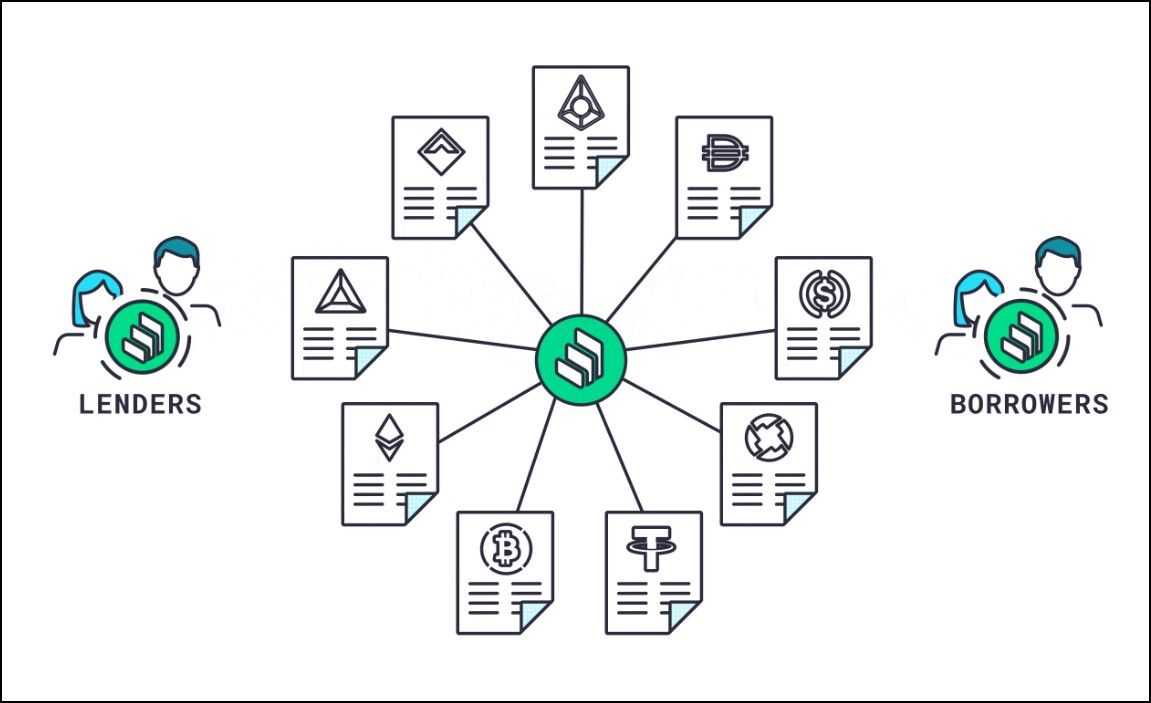
Both perspectives illustrate blockchain's versatility in transforming financial services. Traditional banks benefit from enhanced operational efficiencies, while DeFi opens up a new frontier of decentralized and democratized financial products.
Healthcare
Blockchain technology in healthcare is redefining the industry by leveraging its inherent characteristics like security, immutability, and decentralization.
- Adoption by Traditional Healthcare Institutions: Traditional healthcare systems are exploring blockchain to enhance data security, improve patient privacy, and streamline processes. For instance, Estonia has integrated blockchain to secure patient health records. By utilizing blockchain's immutable ledger, patient data is securely recorded, with changes transparently tracked, ensuring data integrity and reducing fraudulent activities.
- Web3-Native Healthcare Services: Web3 introduces innovative healthcare applications through decentralized platforms. Projects like MedRec, developed at MIT, use blockchain to manage medical records, giving patients control over their health data. These platforms facilitate secure data sharing between patients and healthcare providers, harnessing blockchain's decentralized nature to empower patients and improve care coordination.
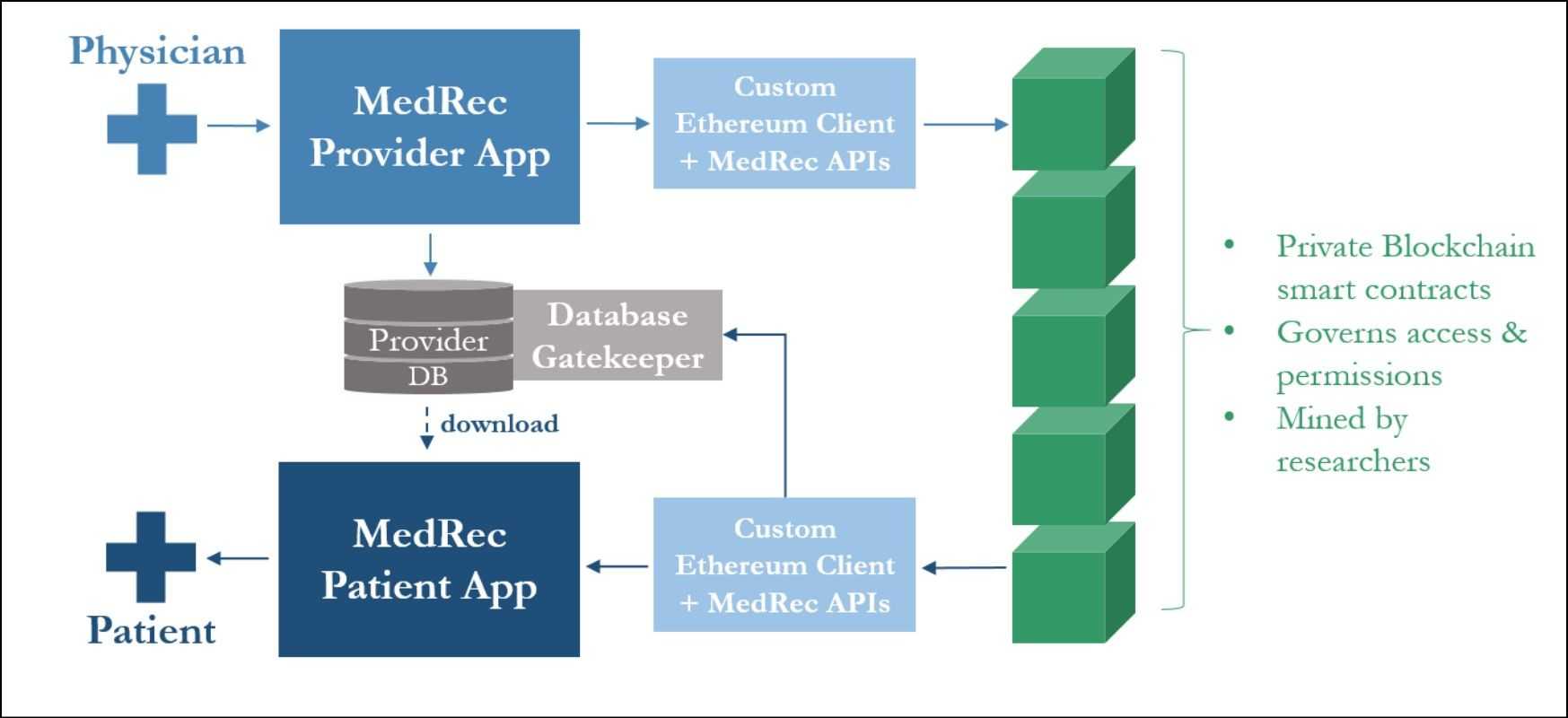
Blockchain's operation in healthcare offers significant advantages over previous systems. Its secure, tamper-proof ledger ensures data accuracy and privacy, which are essential in handling sensitive medical information. Decentralization allows for a patient-centric approach, reducing dependencies on central entities and enhancing data accessibility.
In summary, blockchain in healthcare is not just improving existing processes but also paving the way for more patient-focused, secure, and efficient healthcare delivery systems.
Supply Chain
Blockchain technology is revolutionizing supply chain management by leveraging its inherent characteristics, such as transparency, traceability, and security. These features are transforming how supply chains operate, making them more efficient, reliable, and transparent.
- Transparency and Traceability: Blockchain's transparent ledger allows all parties in the supply chain to view transaction histories, ensuring traceability from origin to end customer. For instance, Walmart uses blockchain to trace the origin of food products, significantly reducing the time to track produce from farm to store. This level of traceability enhances food safety and quality assurance.
- Security and Immutability: The immutability of blockchain ensures that records cannot be altered retroactively. This strengthens the security of the supply chain data against tampering and fraud. De Beers, the diamond giant, employs blockchain to trace diamonds from the mine to the retail point, ensuring they are conflict-free.
- Efficiency: By reducing reliance on paperwork and manual processes, blockchain streamlines operations, making them more cost-effective. Maersk, the world’s largest shipping company, collaborates with IBM on a blockchain project to optimize shipping processes and reduce paperwork.
These are just a few of the real-life examples that demonstrate how blockchain enhances supply chain management. The technology's ability to ensure transparency, security, and efficiency addresses many of the longstanding challenges in supply chains, ultimately leading to more ethical, sustainable, and consumer-friendly practices.
Artificial Intelligence
Blockchain technology is increasingly intersecting with artificial intelligence (AI), offering novel approaches in both traditional settings and Web3 native projects.
- Traditional Institutions Adopting Blockchain in AI: Traditional institutions are integrating blockchain with AI to enhance data security and integrity. For instance, healthcare organizations are using AI for patient diagnosis and treatment, while employing blockchain to securely store and manage patient data. This combination ensures data privacy and aids in reliable AI-driven analyses. Another example is in finance, where banks use AI for predictive analytics and risk assessment and blockchain for securing transaction records and customer data, improving the overall reliability and security of AI applications.
- Web3-Native Artificial Intelligence Projects: In the Web3 realm, decentralized AI projects are emerging, which leverage blockchain for democratizing data and AI models. SingularityNET, for instance, is a decentralized marketplace for AI algorithms, allowing users to create, share, and monetize AI services at scale. By utilizing blockchain, these platforms ensure transparent and fair compensation for developers while providing open access to AI technologies. This decentralization breaks down monopolies on AI data and tools, fostering more collaborative and accessible AI development.
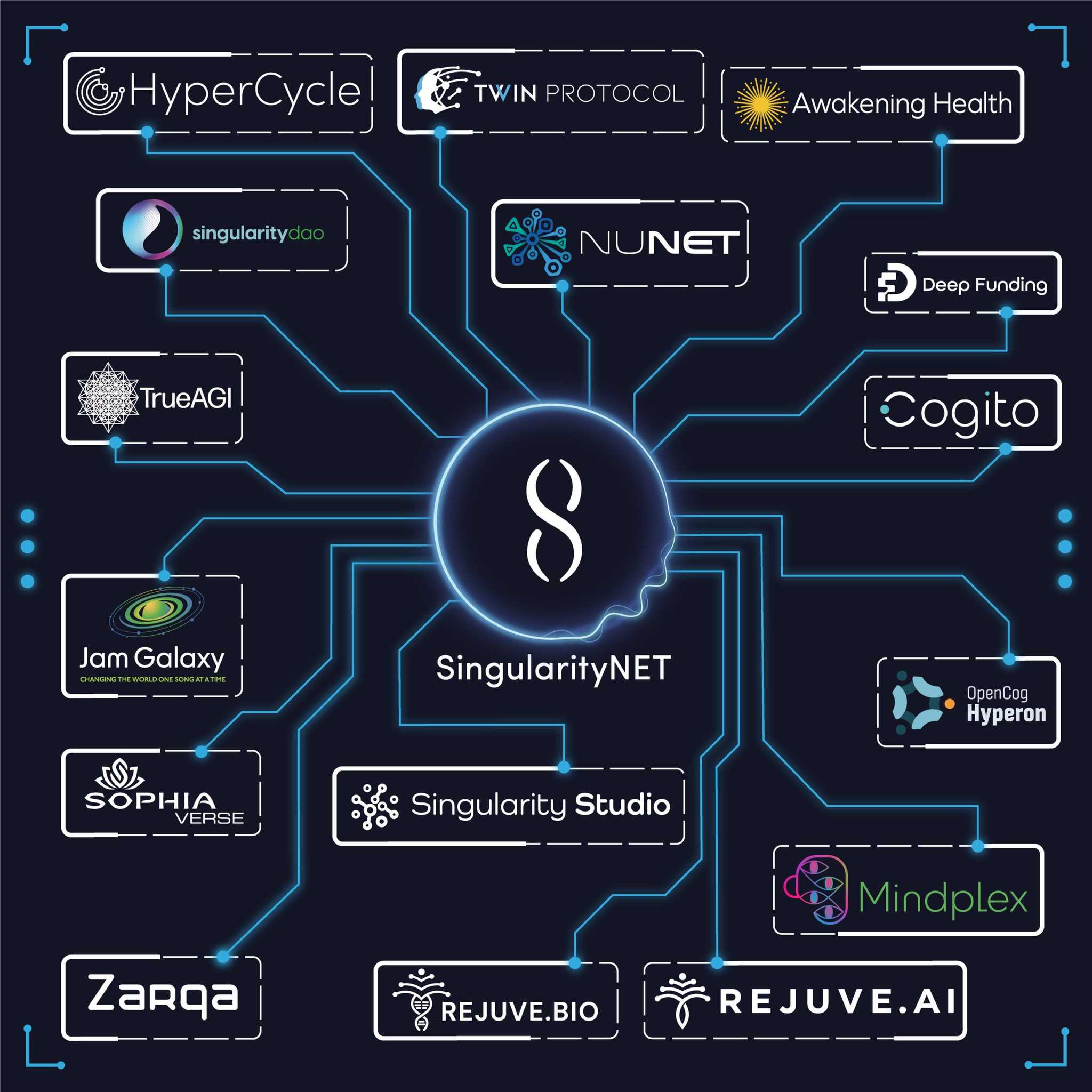
These perspectives highlight blockchain's role in enhancing the security, transparency, and accessibility of AI technologies. In traditional institutions, it fortifies the integrity of AI applications, while in Web3, it fosters a more open and equitable AI ecosystem.
Feel free to explore the concept of Blockchain and Artificial Intelligence in our article on the Top 5 Crypto AI projects.
Personal Identity Security
Blockchain technology is increasingly being used to enhance personal identity security, leveraging its core characteristics of decentralization, immutability, and encryption.
- Decentralization and Control: Decentralization in blockchain allows individuals to have control over their identity data. This contrasts with traditional centralized systems where identity data is stored in a single location, making it more vulnerable to breaches.
- Immutability and Trust: The immutable nature of blockchain ensures that once identity data is recorded, it cannot be altered without consensus. This creates a trustable record of one's identity, which is crucial for various verification processes.
Real-Life Examples:
- Soulbound Tokens: These are non-transferable blockchain tokens that represent one's credentials and achievements. They cannot be sold or transferred, making them a reliable representation of one's identity and qualifications.
- Proof of Personhood: This concept uses blockchain to provide a digital identity that is unique and verifiable, ensuring one person cannot hold multiple identities. It's crucial for applications like voting or benefits distribution.
- Polygon ID: Built on the Polygon blockchain, Polygon ID is a self-sovereign identity solution that allows users to own and control their identity data without relying on central authorities.
Blockchain-based identity solutions offer enhanced security, privacy, and control compared to traditional systems. They mitigate the risk of identity theft and fraud while also making identity verification processes more efficient and reliable. These innovations are pivotal in creating a more secure and user-centric identity management ecosystem.
Real Estate
Blockchain technology is making significant inroads in the real estate sector, with both traditional institutions and Web3-native projects leveraging its benefits.
- Traditional Real Estate Institutions Adopting Blockchain: Traditional real estate markets are incorporating blockchain to streamline transactions and enhance record-keeping. For instance, property titles and deeds can be tokenized and stored on a blockchain, ensuring secure, transparent, and immutable records. This method significantly reduces fraud, expedites property transfers, and simplifies record verification. A notable example is Propy, which facilitates global real estate transactions on a blockchain platform, thereby reducing paperwork and increasing efficiency.
- Web3-Native Real Estate Projects: In the realm of Web3, blockchain is not just transforming traditional real estate transactions but also creating new opportunities in virtual real estate. Platforms like Decentraland and The Sandbox allow users to buy, sell, and develop virtual land in digital environments. These virtual real estate projects have practical use cases in digital advertising, virtual events, and creating immersive online experiences. They represent a new asset class, offering real-world value in the burgeoning metaverse.
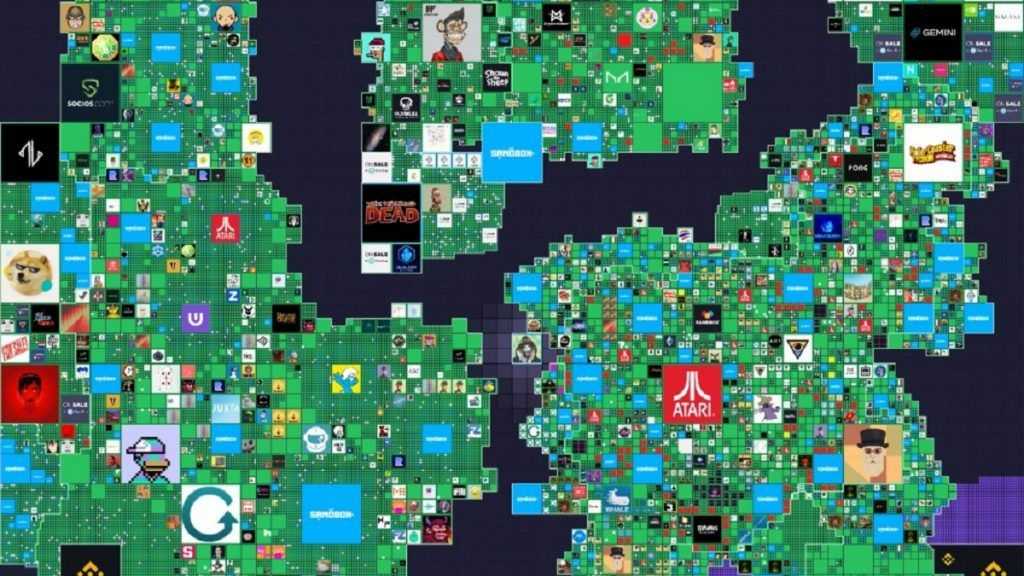
Both approaches underscore blockchain's potential in revolutionizing real estate — from enhancing security and transparency in traditional transactions to pioneering new economic models in the digital space. The technology is not only simplifying existing processes but also opening doors to innovative, virtual real estate ventures.
Digital Media and Entertainment Industry
Blockchain technology is transforming the digital media and entertainment industry, with traditional players and Web3-native projects embracing its potential.
- Adoption by Traditional Institutions: Traditional media and entertainment companies leverage blockchain for better content monetization and rights management. Using blockchain, these institutions can create immutable records for copyrights and ownership, ensuring that artists and creators are fairly compensated. An example is KodakOne, a blockchain-based platform that manages photographers' image rights, enabling secure and transparent revenue distribution. Similarly, music streaming services like Spotify are exploring blockchain to improve royalty distribution, ensuring artists are paid accurately for their work.
- Web3 Native Entertainment Projects: In the Web3 space, blockchain enables entirely new forms of entertainment. Decentralized platforms allow creators to monetize content without intermediaries directly. For instance, platforms like Audius provide a decentralized music streaming service where artists control their music distribution and connect directly with fans. Additionally, blockchain-based games, such as Axie Infinity, have introduced unique economic models where players can earn cryptocurrency and trade in-game assets as non-fungible tokens (NFTs).
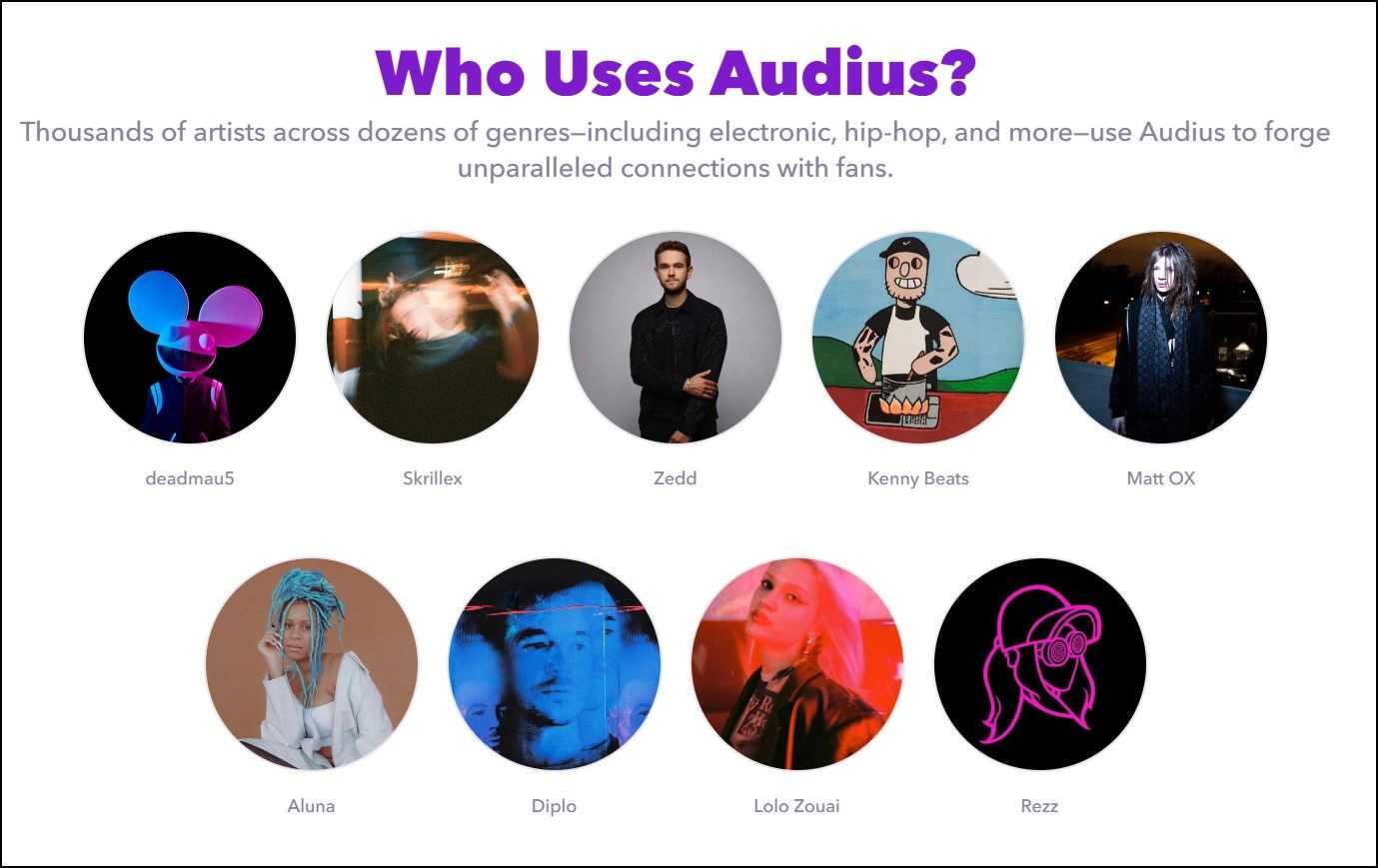
These examples highlight blockchain's role in reshaping the digital media and entertainment landscape. It provides traditional institutions with tools for better rights management and piracy control, while Web3 projects offer innovative ways for creators and consumers to interact, engage, and transact in the digital realm.
Real-World Asset Tokenization
Blockchain technology is revolutionizing the concept of real-world asset (RWA) tokenization by leveraging its distinct features like immutability, transparency, and fractional ownership. This process transforms physical assets into digital tokens on a blockchain, making them easier to trade and more accessible to a broader range of investors.
- Immutability and Transparency: Public Blockchains ensure that once an asset is tokenized, its ownership and transaction records become immutable and transparent. This enhances trust and security, as all transactions are verifiable and permanent, reducing the risk of fraud.
- Fractional Ownership: Tokenization enables fractional ownership of assets, allowing investors to buy tokens representing a part of a real asset. This lowers the entry barrier for investment, democratizing access to assets like real estate or art.
Real-Life Examples:
- Real Estate: Companies like RealT and Propy are tokenizing real estate, allowing investors to purchase fractions of properties. This makes real estate investment more accessible and liquid.
- Art and Collectibles: Platforms like Maecenas and Rarible enable the tokenization of artwork and collectibles. Investors can own shares of a painting or a rare item, which was previously unattainable for most.
- Commodities: Gold and other precious metals are being tokenized by companies like Paxos, offering a digital representation of physical gold that is tradeable on blockchain networks.
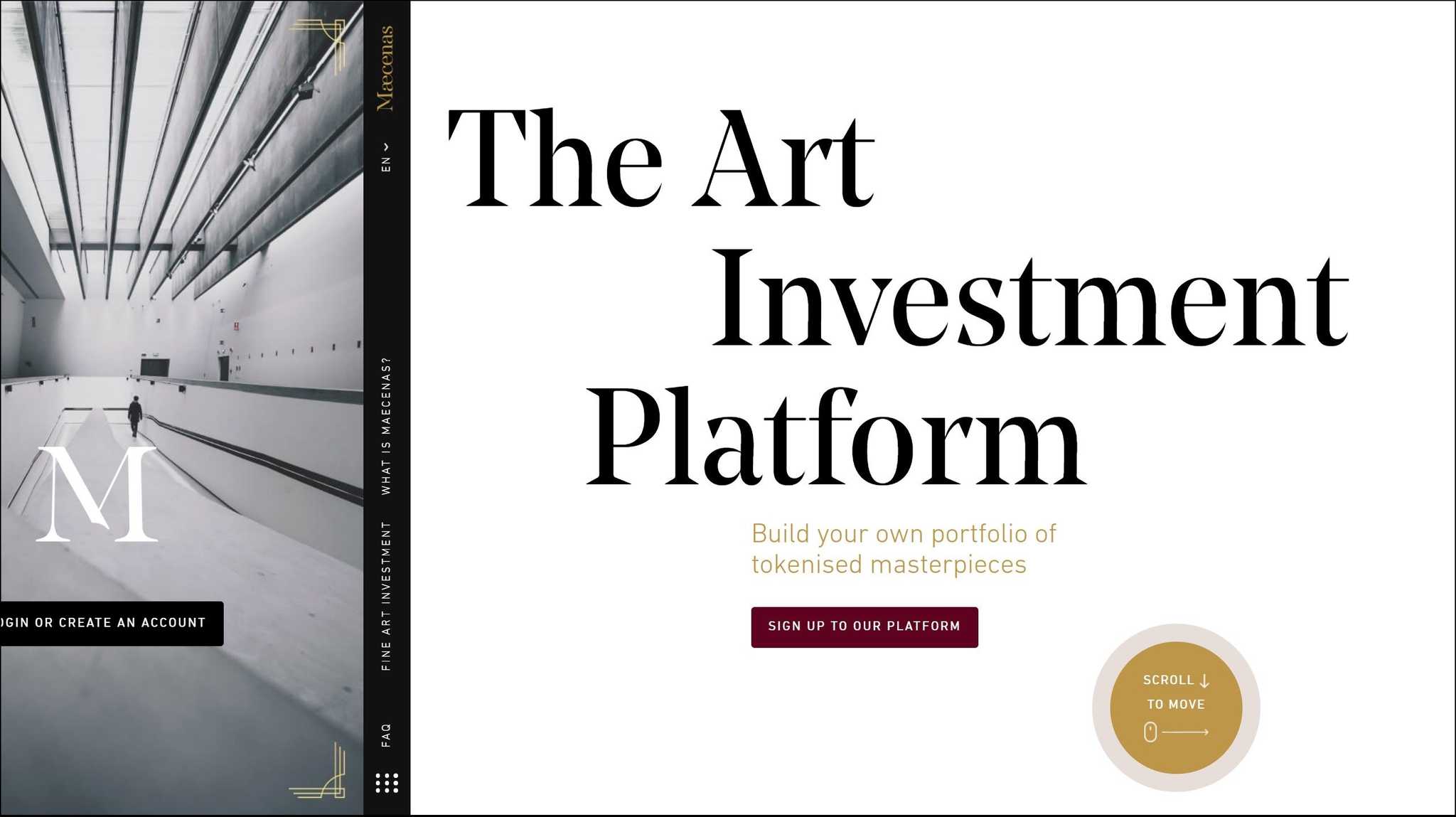
Blockchain's operation in RWA tokenization offers significant improvements over traditional methods. It provides a secure, transparent, and inclusive way of handling asset transactions, opening up new investment opportunities and markets previously limited by high costs and lack of accessibility.
Benefits of Blockchain Technology
The diverse applications of blockchain technology across various sectors leverage key benefits that are central to its value proposition:
- Decentralization: By removing central authorities, blockchain enhances system resilience and reduces the risk of single points of failure, making processes more robust and secure.
- Transparency and Traceability: Blockchain's ledger allows for transparent and immutable record-keeping. This ensures data integrity, builds trust among stakeholders, and facilitates easy traceability of assets and transactions.
- Security: With cryptographic encryption, blockchain offers a high level of security, crucial for sensitive data in finance, healthcare, and personal identity management.
- Efficiency and Cost Reduction: Blockchain streamlines and automates processes, reducing manual intervention, paperwork, and intermediary costs. This is particularly beneficial in supply chain management and financial transactions.
- Inclusivity and Accessibility: By enabling fractional ownership and peer-to-peer transactions, blockchain democratizes access to various assets and services, from real estate to digital media.
It is important to note that many of the benefits highlighted above refer to public blockchains such as Ethereum, Bitcoin, Avalanche, Solana, Cardano, etc. There are also private blockchains, such as Onyx, used by banking firms, which do not have the benefits of public transparency, traceability, or decentralization.
In summary, blockchain's unique attributes are being creatively harnessed across sectors, driving innovation and offering solutions that address traditional challenges in novel ways.
Closing Thoughts
As we witness the rapid evolution of blockchain technology, innovations like account abstraction are refining existing applications and paving the way for new use cases. These developments promise to enhance market penetration, making blockchain more accessible and user-friendly.
The inherent nature of blockchain allows for seamless updates, reducing maintenance overheads significantly. This efficiency shift allows resources to be redirected towards further innovation and adoption. Moreover, blockchain's global reach breaks down geographical barriers, offering uniform access to services worldwide — a stark contrast to the limitations often encountered in the Web2 era. This paradigm shift heralds a future where blockchain's potential is fully realized, transcending traditional boundaries and revolutionizing how we interact with technology.
Frequently Asked Questions
The main use case of blockchain is to provide a secure, decentralized ledger for recording transactions. This technology ensures immutability, transparency, and security, making it ideal for various applications like financial transactions, supply chain management, digital identity verification, and asset tokenization. Its decentralized nature also facilitates peer-to-peer transactions, cutting out intermediaries and reducing costs.
AI and blockchain together are used to enhance data security, improve decision-making processes, and create transparent and efficient systems. In healthcare, AI is used for diagnostics and treatment planning, while blockchain securely manages patient data. In finance, AI-driven analytics are combined with blockchain for risk assessment and fraud detection. This synergy also supports decentralized AI marketplaces, enabling the sharing of AI tools and resources.
A notable example is JPMorgan Chase, which has developed JPM Coin, a blockchain-based digital token that facilitates instant payment transfers and settlements between institutional clients. This innovation showcases blockchain's potential to reduce transaction times, enhance security, and streamline financial processes in the banking sector.
Blockchain is transforming real estate by enabling faster, more transparent, and secure transactions. It allows for tokenization of property, making fractional ownership possible and accessible. Companies like Propy use blockchain to automate and secure the real estate transaction process, reducing paperwork and fraud and enhancing the overall efficiency of buying and selling properties.
Yes, blockchain can significantly improve voting systems by enhancing security, transparency, and accessibility. It can ensure the integrity of votes by recording them on an immutable ledger, making the voting process more resistant to tampering and fraud. Blockchain-based voting systems also offer the potential for remote voting, increasing voter turnout and making the electoral process more inclusive and accessible.
Disclaimer: These are the writer’s opinions and should not be considered investment advice. Readers should do their own research.


